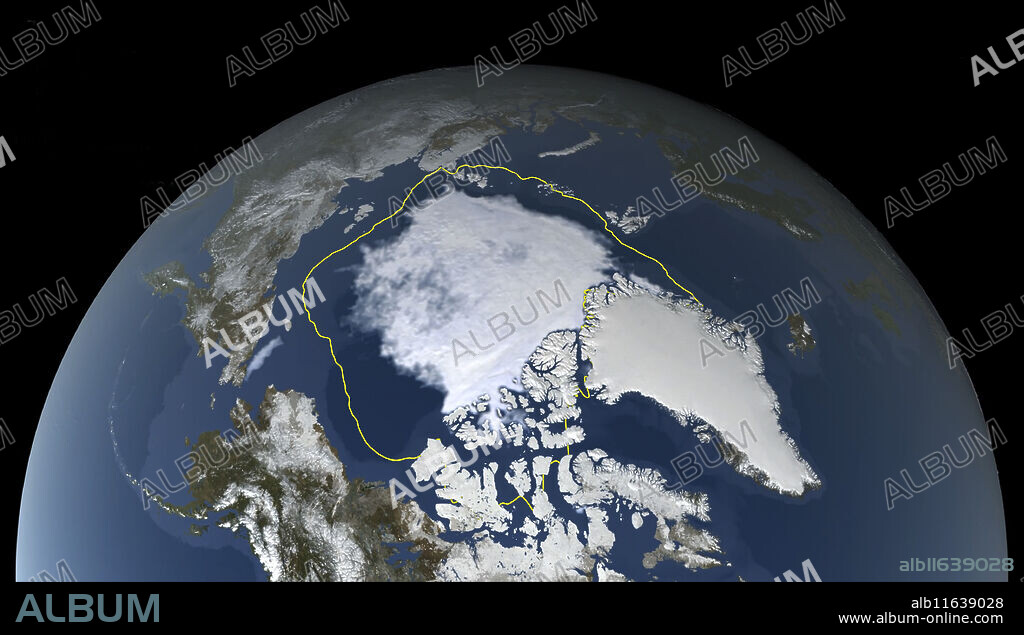alb11639028
Arctic ice minimum extent, 2024

|
Zu einem anderen Lightbox hinzufügen |
|
Zu einem anderen Lightbox hinzufügen |



Haben Sie bereits ein Konto? Anmelden
Sie haben kein Konto? Registrieren
Dieses Bild kaufen.
Nutzung auswählen:

Titel:
Arctic ice minimum extent, 2024
Untertitel:
Siehe automatische Übersetzung
Satellite image showing the Arctic polar ice cap at its annual minimum extent on 11th September 2024. The Arctic sea ice (white, centre) reaches a minimum in September, at the end of the Arctic summer. This minimal ice area is called the perennial ice cover. The perennial ice has been steadily decreasing since satellites began observing it in 1979, at a rate of about 10 percent per decade. The yellow boundary shows the minimum extent averaged over the 30-year period from 1981 to 2010. The 2024 sea ice covers 4.28 million square kilometres and is the 7th lowest sea ice extent since records began. The decrease in perennial ice cover is attributed to climate change. Data from the Japan Aerospace Exploration Agency's Advanced Microwave Scanning Radiometer 2 (AMSR2) instrument aboard the Global Change Observation Mission 1st-Water (GCOM-W1).
Bildnachweis:
Album / NASA's Scientific Visualization Studio/SCIENCE PHOTO LIBRARY
Freigaben (Releases):
Model: Nein - Eigentum: Nein
Rechtefragen?
Rechtefragen?
Bildgröße:
3941 x 2240 px | 25.3 MB
Druckgröße:
33.4 x 19.0 cm | 13.1 x 7.5 in (300 dpi)
Schlüsselwörter:
21. JAHRHUNDERT • ABSAGE • EIS (KAELTE) • EIS (KÄLTE) • EIS • EIS, GEFRORENE SEEN • GEGEND • GEOGRAFIE • GEOGRAPHIE • MEER • MEERE • MISSION • OZEAN • SATELLIT • SEA • SEESTUECK (GEMAELDE) • SEPTEMBER • VERLUST • WELTRAUM • WINTER: EIS
 Pinterest
Pinterest Twitter
Twitter Facebook
Facebook Link kopieren
Link kopieren Email
Email
